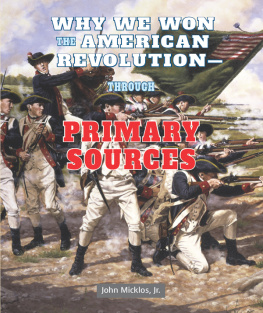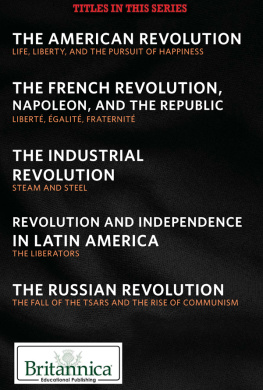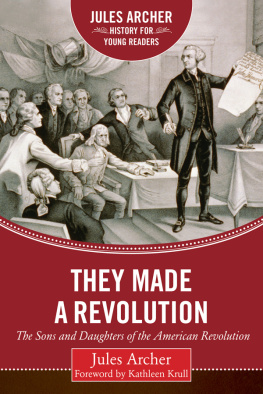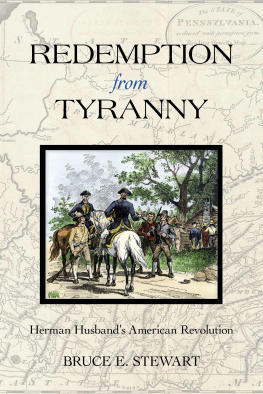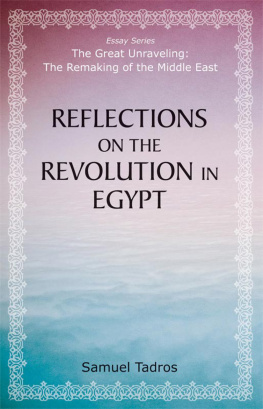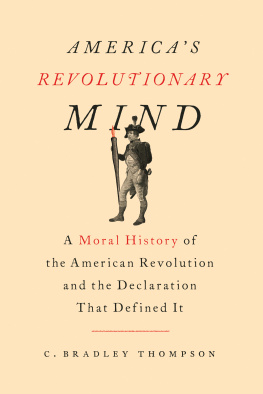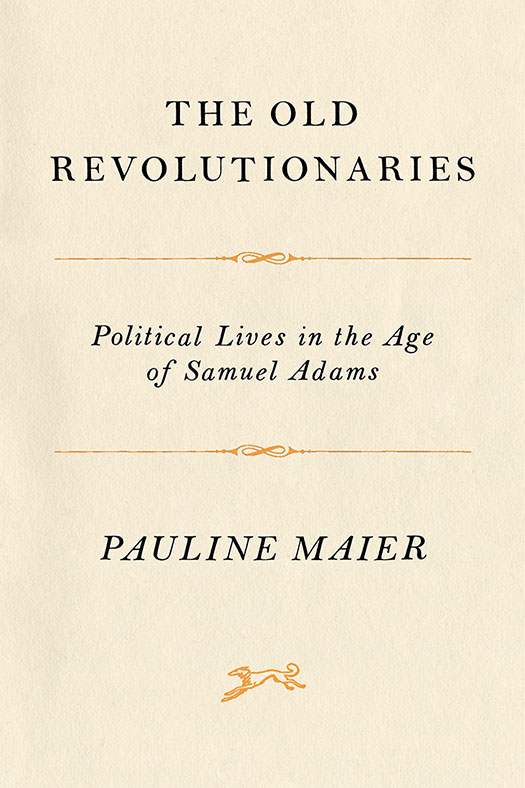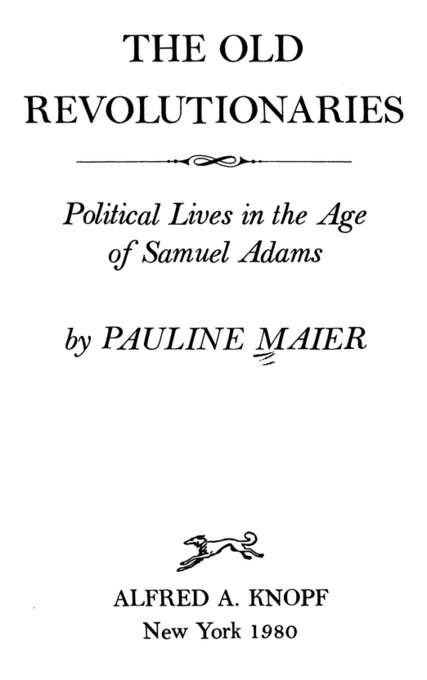Also by Pauline Maier
FROM RESISTANCE TO REVOLUTION
Colonial Radicals and the Development of
American Opposition to Britain, 17651776
(1972)
A Borzoi Book, published in New York by Alfred A. Knopf
THIS IS A BORZOI BOOK
PUBLISHED BY ALFRED A. KNOPF, INC .
Copyright 1980 by Pauline Maier
All rights reserved under International and Pan-American Copyright Conventions. Published in the United States by Alfred A. Knopf, Inc., New York, and simultaneously in Canada by Random House of Canada Limited, Toronto. Distributed by Random House, Inc., New York.
Library of Congress Cataloging in Publication Data
Maier, Pauline [date], The old revolutionaries.
1. United StatesHistoryRevolution, 17751783Biography. 2. RevolutionistsUnited StatesBiography. 3. United StatesBiography.
I. Title.
E302.5.M23 1980 973.30922 [B] 80-7624
eISBN: 978-0-307-82811-8
v3.1_r1
This book
is for my children.
An earlier version of this book
was presented as the
A NSON G. P HELPS L ECTURES
at New York University for 1976.
CONTENTS

ILLUSTRATIONS

Plan of the City of New York, by Bernard Ratzer, 1767. The New York Historical Society, New York City.
To the Public. The long expected T EA S HIP arrived last night at Sandy-Hook, broadside, 1774. The New York Historical Society, New York City.
Map of N EW Y ORK , I, showing New York Island with only the lower tip settled, 1778. American Antiquarian Society.
Now fitting for a Privateer, broadside, 1776. American Antiquarian Society.
A View of Part of the Town of Boston in New-England and Brittish Ships of War Landing Their Troops, 1768, engraved by Paul Revere in 1770. American Antiquarian Society.
A New and Correct Plan of the Town of Boston, 1775. American Antiquarian Society.
Samuel Adams, painted by John Singleton Copley in 1770, when Adams served as Bostons spokesman in its efforts to have the troops removed from the town after the Massacre. Museum of Fine Arts, Boston.
Faneuil Hall, Boston, from Massachusetts Magazine, March 1789. American Antiquarian Society.
Samuel Adams, engraved by Paul Revere after the Copley portrait for the April 1774 issue of the Royal American Magazine. American Antiquarian Society.
S. A DAMS , E SQ ., Governor of Massachusetts, 1795, engraving. American Antiquarian Society.
Josiah Bartlett, painted by E. T. Billings, after John Trumbull. Dartmouth College Museum and Galleries.
Sea Captains Carousing at Surinam, painted by John Greenwood, 1758. The St. Louis Art Museum.
Richard Henry Lee, painted by Charles Willson Peale. Independence National Historical Park Collection, Philadelphia.
Stratford, the Lee family home in Westmoreland County, Virginia, photographed by C. O. Greene for the Historic Buildings Record Survey. The Collections of the Library of Congress.
Elizabeth Brooke Carroll (Mrs. Charles Carroll of Annapolis), mother of Charles Carroll of Carrollton, painted by John Wollaston. The Detroit Institute of Arts, Founders Society Purchase.
Charles Carroll of Annapolis, father of Charles Carroll of Carrollton, painted by an unknown nineteenth-century artist after an earlier portrait by John Wollaston. Maryland Historical Society, Baltimore.
Mary (Molly) Darnall Carroll (Mrs. Charles Carroll of Carrollton), painted by Charles Willson Peale. Collection of John D. Schapiro. Photo: Courtesy of the Baltimore Museum of Art.
Charles Carroll of Carrollton, painted by Sir Joshua Reynolds. Yale Center for British Art, Paul Mellon Collection.
Charles Carroll of Carrollton, painted by Michael Laty, after Robert Field. Maryland Historical Society.
Charles Carroll of Carrollton as an old man, engraving. American Antiquarian Society.
Engraved certificate: John Warren, the younger brother of Joseph Warren, testifies that Levi Bardett, the son of Josiah and Mary Bartlett, has attended his medical course, 1785. American Antiquarian Society.
A N EW and Accurate Map of V IRGINIA , and Part of M ARYLAND and P ENNSYLVANIA , 1780. American Antiquarian Society.
PREFACE
L ET ME CONFESS at the outset that this book, though it answers some questions of the sort historians are trained to ask, has also beenand was meant from the outset to bea personal adventure. I wanted to know better what it was to be an American of the late eighteenth century and to live through the American Revolution. The project began eight years ago when I completed a book on the radicals of 17651776, those colonists who were in the vanguard of what became the American revolutionary movement. I was confident that I knew the revolutionaries politics well, yet I had only a very limited sense of them as peoplefor reasons that are now far clearer to me than they were then. My interest in the colonists struggle for liberty would have been considered appropriate two centuries earlier, but curiosity about the men involved in that struggle was alien to the culture of mid-eighteenth-century America. If we live in a culture of narcissism, theirs was the opposite. Self-indulgence was condemned as a form of corruption, and self-indulgence often seemed to include that very concern with individuals, their needs and emotions that became a part of the modern sensibility with the rise of romanticism in the late eighteenth and early nineteenth centuries.
The great cultural transformation that divides us from the revolutionaries can perhaps be seen more clearly in English letters. The young James Boswell, born in 1740, was part of a new mentality in his obsession with individuals and subjective emotion. So different were the objects of his curiosity from those native to his subject, Samuel Johnson, who was born in 1709, that one of Johnsons recent biographers describes their dialogues as between two epochs as well as two men. The Revolutionaries of 1776 belonged, like Johnson, to an earlier world concerned with men less in their separate and private capacities than as parts of some larger human enterprise. The Americans believed above all that good or virtuous men would subordinate personal considerations to the good of their communitiesto the commonweal or res publicawhich was a more proper object of their thoughts and efforts. It was therefore characteristic of the time that Charles Thomson, the Philadelphia patriot, scrupulously removed the names of Pennsylvania revolutionaries from David Ramsays manuscript history of the Revolution. To emphasize who did what, it seemed, was to detract attention from their common public mission.
Americans of the mid-eighteenth century in general wrote more easily about causes than about themselves. Benjamin Franklin, the best-known American of that day, could write about himself only by making himself into a cause, a model to show younger Americans how personal ambition and public service could be reconciled. John Adamss diary, like the letters of Mary and Josiah Bartlett or the correspondence of Charles Carroll of Carrollton, reveal private feelings and needs in a more straightforward way. Those are, of course, personal documents, written for the authors own use or for the information of close relatives, and so one would expect them to include private information. But in an extreme case such as that of Samuel Adams, even family correspondence was by our standards highly impersonal, shaped above all by public commitments. Once I understood why, Adamss apparently wooden letters began to say something very important about him, and I could understand more of what made life in the eighteenth century different (or, which is the same thing, what is distinctive about life in the twentieth century). It is important to realize, however, that when we push beyond the surface of most eighteenth-century sources and ask questions about the character of individuals lives, we are often asking what our subjects had no intention of telling us, and even what those private provincial people would have said (perhaps properly, as I sometimes felt in reading the Carroll papers) was none of our business.


